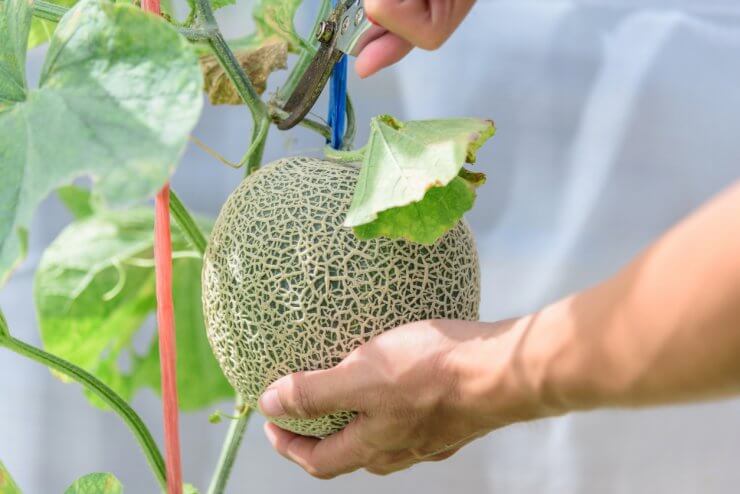
Harvesting melon with shears
Since each melon is the product of a pollinated flower, your melons are going to ripen at their own pace—and probably not at the same time.
Now, this is a good thing in a way; how much cantaloupe can you eat in a week? You’ll want to be out in the garden on a daily basis as harvest time approaches.
Each type of melon ripens differently. Cantaloupe (and when we say cantaloupe, we’re talking about American cantaloupe) will slip from the stem when you give the fruit a little twist. Honeydew, on the other hand, do not slip from the stem. You’ll want to look for other signs of ripeness, such as the skin getting dull and rough, and the tendrils closest to the fruit beginning to brown and dry out. With all melons, do not leave them on the vine past their ripeness. Pick them and eat them.
Cantaloupes will keep in the fridge for up to a week; honeydew melons will only last a couple of days. Check the details on the variety you plan to grow so you’re prepared to handle your harvest appropriately.
So, what to do when it’s raining melons? Well, one of the easiest things is to cut the flesh into slices or cubes (with the rind removed), and freeze them in a single layer. Then transfer them to freezer bags or containers, putting waxed paper between the layers.
There are some recipes for melon jam, but that’s mostly for the melons with meatier flesh, like cantaloupe. You can make some refreshing coolers with honeydew-like melons. And after a day of harvesting, you deserve a cool, refreshing drink!
Do you know exactly when to harvest your melons? Please tell us what you look for when getting ready to harvest.


 Previous
Previous


Sure I do! I’m an Expert in this matter! When I go out to my garden in the morning and discover the melons I’ve been waiting on for so long to ripen are now gone, or chewed up on the ground by raccoons, I know, without a doubt, they were PERFECTLY RIPE! TM.